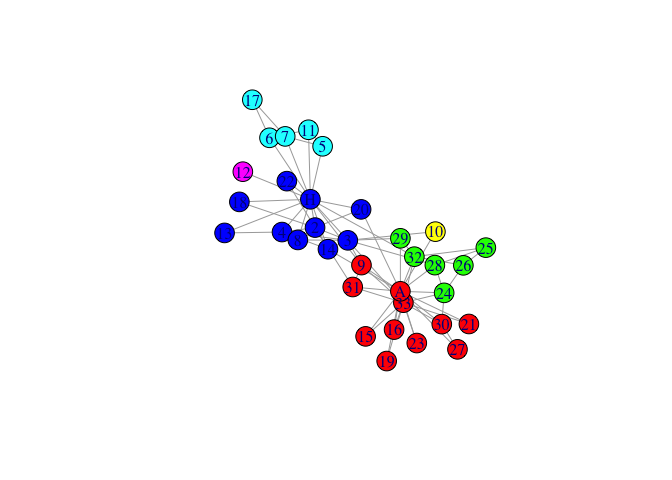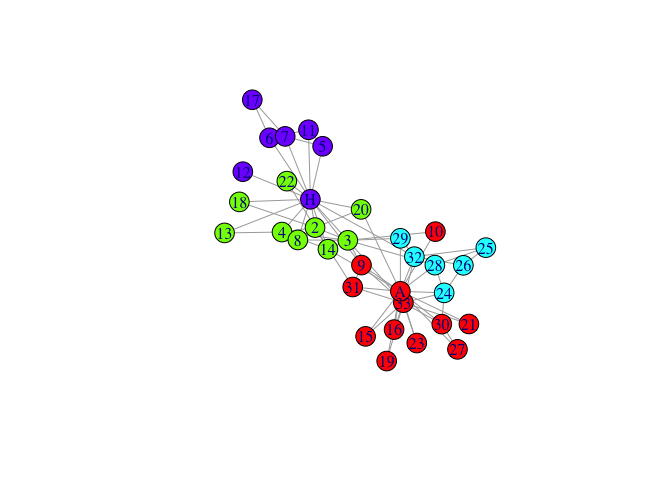
The hardware and bandwidth for this mirror is donated by dogado GmbH, the Webhosting and Full Service-Cloud Provider. Check out our Wordpress Tutorial.
If you wish to report a bug, or if you are interested in having us mirror your free-software or open-source project, please feel free to contact us at mirror[@]dogado.de.
The goal of ‘rSpectral’ is to make Spectral Modularity graph clustering method available to most of R graph frameworks.
You can install the development version of rSpectral from GitHub with:
# install.packages("devtools")
devtools::install_github("cmclean5/rSpectral")The stable version is available on CRAN:
install.packages("rSpectral")This is a basic example which shows you how to solve a common problem
library(rSpectral)
library(igraph)
#>
#> Attaching package: 'igraph'
#> The following objects are masked from 'package:stats':
#>
#> decompose, spectrum
#> The following object is masked from 'package:base':
#>
#> union
data(karate, package="igraphdata")
l<-layout_nicely(karate)
memT<-V(karate)$Faction
palette <- rainbow(max(as.numeric(memT)))
plot(karate,vertex.color=palette[memT],layout=l)
mem0<-igraph::membership(rSpectral::spectral_igraph_communities(karate))palette <- rainbow(max(as.numeric(mem0)))
plot(karate,vertex.color=palette[mem0],layout=l)
mem1<-igraph::membership(
rSpectral::spectral_igraph_communities(karate, fix_neig=1))palette <- rainbow(max(as.numeric(mem1)))
plot(karate,vertex.color=palette[mem1],layout=l)
mem1.5<-igraph::membership(
rSpectral::spectral_igraph_communities(karate, fix_neig=1,Cn_min=5))palette <- rainbow(max(as.numeric(mem1.5)))
plot(karate,vertex.color=palette[mem1.5],layout=l)
GraphNEL objects could be processed similarily, all
other graph types could be converted either to igraph or to
GraphNEL by packages such as Intergraph.
These binaries (installable software) and packages are in development.
They may not be fully stable and should be used with caution. We make no claims about them.
Health stats visible at Monitor.